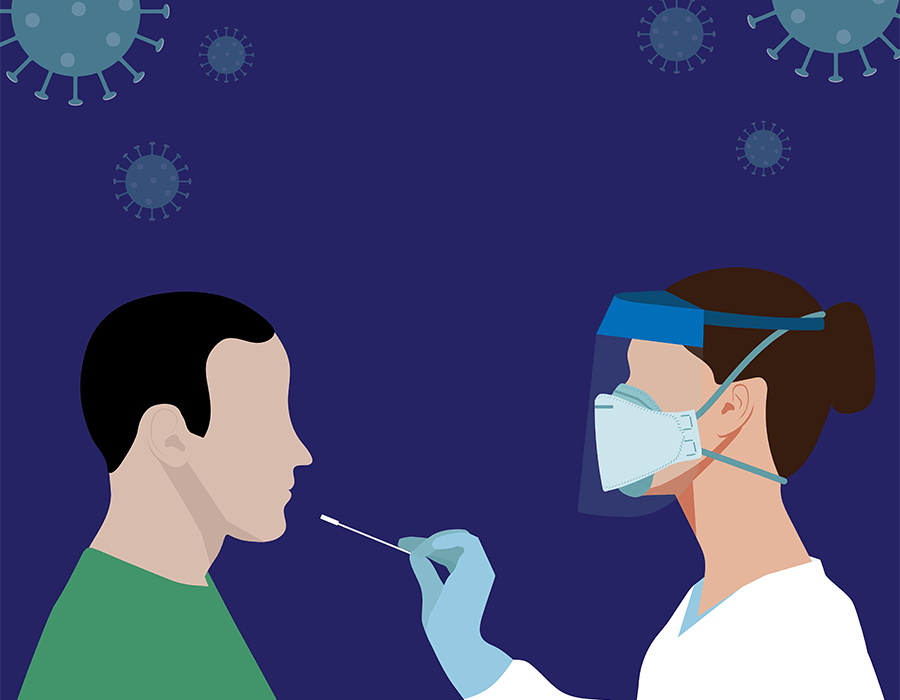Do you remember the last time you went to a show where there was a “splash zone”? Maybe it was a nautical show with seals or an art exhibit or concert. When you’re seated in a splash zone, you usually are supposed to wear some kind of poncho to serve as a barrier between you and the water.
Now, imagine that the water the seals are throwing around are particles carrying germs and that poncho is the only thing protecting you from getting sick.
As gross as this image is, that is essentially the role that Personal Protective Equipment (PPE) plays in keeping healthcare workers and patients safe. It serves as a barrier between germ-bearing particles and a person’s mouth, nose, ears, eyes, and skin. People expel these germs on miniscule droplets from their nose and mouth, but wearing PPE can keep those particles right at their face. If others are wearing PPE, then that layer can prevent those particles from reaching them.
When staff are handling highly infectious patients, the PPE is to protect the staff member. But PPE also protects patients. When they are immunocompromised or at their most vulnerable, like being open on the operating table, the staff’s PPE can keep their germs away from these patients.
The obvious answer to prevent staff from passing germs to patients is that they should stay home while sick, but that’s not as simple a solution as it might appear. Take COVID-19, for example. Research shows you are most contagious 1-2 days before symptoms start to appear. Another example is RSV, which can be deadly to infants and elderly. Studies show that 40% of people who have RSV are asymptomatic, but still contagious. Those who are symptomatic will still be contagious days before their symptoms show up.
Thus, even if staff take off work the moment they start to feel sick, they could still pose a threat to patients without knowing it. This is especially important when dealing with elderly, infants, or immunocompromised populations.
Types Of PPE Found In Healthcare Settings
There are a wide range of PPE available for healthcare workers, and they all serve different purposes.
Gowns
Protective gowns include surgical gowns and isolation gowns. Gowns are primarily for protecting staff. In surgery or emergency situations, they protect staff from potentially harmful bodily fluids. They also protect the staff’s clothing from harmful droplets, which could later be transmitted to the person’s hand and then to their face, making them sick. They are typically disposable, but can be reusable. Unless being used in a surgery setting, gowns are typically not sterile, but they still need to be laundered in a certain way.
Helmets
PPE helmets or hoods encompass the whole head and, often, the shoulders. They provide filtered air to the wearer, primarily protecting them but also protecting patients, depending on the setting and application. Because the helmet encompasses the whole head, it protects your mouth, ears, nose, and eyes (all have the potential to take in germs) at once.
Gloves
Perhaps the most common, and important, form of PPE is gloves. Gloves protect your hands from germs and particles which are on a person, as well as from their bodily fluids. Gloves do not repel germs, however, so they need to be treated like your hands. They should be changed regularly. Best practice dictates putting on a new set of gloves every time you enter a patient’s room and discarding them before exiting.
Goggles
PPE goggles protect your eyes from germ-bearing droplets, as well as from bodily fluids. While your everyday family practitioner might not wear goggles when you come in to see them, eye protection plays an important role in surgery and emergency settings.
Face Shields
An alternative to goggles is a full face shield. A face shield, however, is not fitted to your face so best practice is to wear a face mask or respirator along with the face shield. Some healthcare workers and facilities prefer face shields over goggles or other eye protection, because it also protects your whole face.
Face Masks
Surgical masks are most commonly used in a healthcare setting. This is one of the most critical forms of PPE in terms of protecting patients. As we mentioned, you can be contagious with illnesses you don’t even know you have. A surgical face mask keeps your germs to yourself. It also keeps your patient’s germs away from your mouth!
Respirators
N95 respirators are an alternate form of face mask that offers superior protection from droplets. These are fitted to your face and stop 95% of particles down to 0.1 microns in size. Due to the nature of an N95 respirator, it does protect patients, but the fine tuned filter primarily protects the wearer. When working with highly contagious patients, staff should wear an N95 respirator.
What Makes An N95 Different?
N95s use a respirator filter that makes them a much stronger barrier than a traditional face mask or certain hoods or helmets. This ultimately depends on the filters used in the hoods.
N95s are also fitted to your face. This can often be uncomfortable, but options like the SHIELD-95-MEDI are designed for a comfortable fit with increased visibility for a wide range of faces.
When choosing your PPE supplier, you should ensure that their N95 respirators are NIOSH-Approved. This means that the respirator has been tested and met all the standards of Title 42, Code of Federal Regulations, Part 84.
We’re slightly bias, but we also recommend working with a company that has been setting clean air standards for over 40 years in the cleanroom industry. LWS defines clean air in the cleanroom setting, and we’ve taken that expertise and translated it into comfortable, effective N95 respirators. ‘


